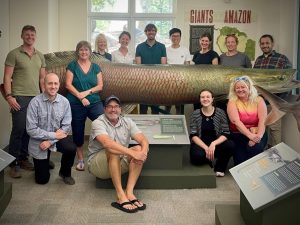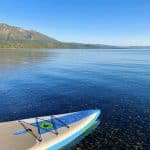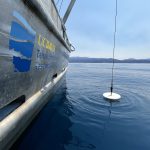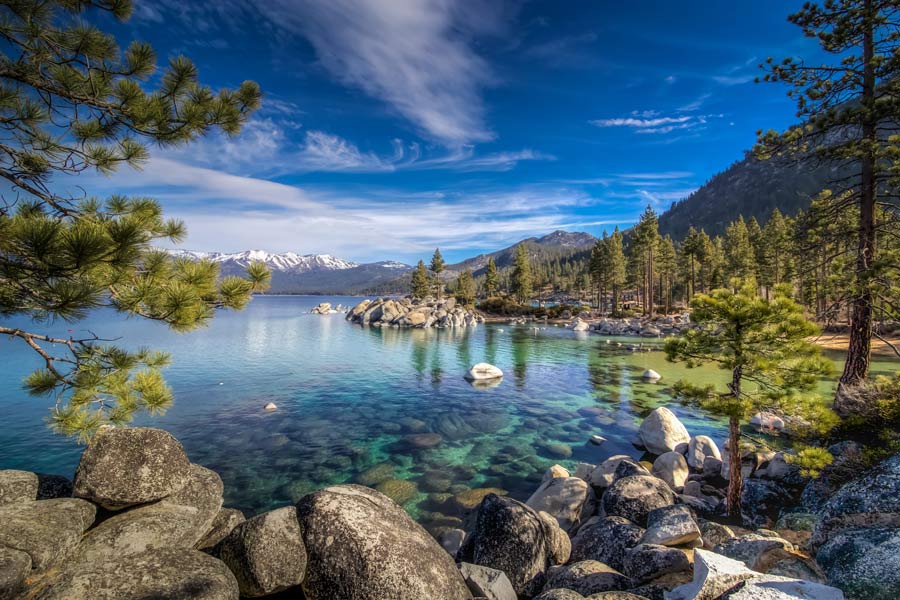Public Lands: Our Privilege and Responsibility
When you open your front door in Tahoe, you’re never far from a forested trail, a lake view, or an expansive meadow. Such access to nature is one of the basin’s greatest gifts, where residents and visitors find peace, connection, and play. While it may feel effortless, this abundance of public land didn’t happen by accident.
Fifty years ago, public access looked very different. In 1971, only 13.5 miles of Lake Tahoe’s 72-mile shoreline were publicly owned. Today, thanks to land acquisitions from willing sellers, that number has more than doubled to 34 miles. All told, roughly 90 percent of the Tahoe Basin is now protected public land for all to enjoy.
Though easy to take for granted, our right to enjoy it was recently challenged.
When language surfaced in a Senate reconciliation bill suggesting public lands could be sold, the outcry was swift. In a region where open space is a shared heritage, the idea of privatizing public lands struck a nerve. Thanks to a strong public response and congressional support, especially from U.S. Representative Kevin Kiley, the language was removed.
Public lands at Tahoe not only keep us healthy and feed our souls, but they also fuel our local economy. While we have many challenges facing our public lands today, including growing an ethos of care and stewardship, Lake Tahoe is a national model for fostering the triple bottom line where the environment, the economy, and communities collectively win. This moment has shown us that even 50 years of progress in land conservation is not written in stone—it requires ongoing effort.
This summer marks an important chapter in that effort. On August 6, the annual Tahoe Summit returns, gathering federal, state, Tribal, and local leaders to chart the future of restoration in the basin. Since the first Summit in 1997, the event has symbolized bipartisan commitment and regional collaboration to protect Lake Tahoe.
Born from that first Tahoe Summit, the Environmental Improvement Program (EIP) has become the engine behind conservation in the basin. Under TRPA’s leadership, more than 80 public and private organizations—collectively known as #TeamTahoe—have delivered 800 plus EIP projects over nearly three decades. These projects restore forests and watersheds, preserve habitats, and improve transportation and sustainable recreation. The work helps Lake Tahoe remain one of the clearest lakes on Earth.
Yet new threats continue to emerge. Aquatic invasive species—including those not in the lake, like the golden mussel—are a growing concern. While many assume that the risk lies with boats, these invaders can just as easily spread from kayaks and paddleboards without proper cleaning. Also critical is forest health, especially as hotter, drier seasons remind us just how fragile our forests are. Litter, erosion, and traffic congestion continue to demand our attention.
Tahoe’s progress in these areas has always come from collective action.
Destination Stewardship recognizes that residents, visitors, businesses, and agencies have a role to play. It means taking the shuttle to and from Emerald Bay, installing stormwater best management practices on your property, staying on designated trails, and leaving no trace. It means welcoming newcomers with guidance—by sharing the ways you care for Tahoe.
Because the right to enjoy public lands comes with a responsibility to protect them. We don’t have to care for these lands. We get to.
The upcoming 29th annual Tahoe Summit marks an opportunity to celebrate and amplify our work. Protecting public lands isn’t a one-time achievement, it’s a forever quest. I hope you’ll join me and keep us moving in the right direction.

Support Local Journalism

Support Local Journalism
Readers around the Lake Tahoe Basin and beyond make the Tahoe Tribune's work possible. Your financial contribution supports our efforts to deliver quality, locally relevant journalism.
Now more than ever, your support is critical to help us keep our community informed about the evolving coronavirus pandemic and the impact it is having locally. Every contribution, however large or small, will make a difference.
Your donation will help us continue to cover COVID-19 and our other vital local news.










